21 Best Places to see Bioluminescence
Travel Inspiration / April 29, 2025 / 7 comments
Bioluminescence, a natural phenomenon where living organisms produce light, is one of nature’s
most enchanting spectacles. Seeing it is an unforgettable experience. Luckily, this phenomenon
can be found in various corners of the globe. Below ar some of the best places to see bioluminescence around the world so you can add one (or a few) to your travel bucket list!
Each bioluminescent hotspot offers a unique encounter with this natural wonder. From the
sparkling shores of Puerto Rico’s Mosquito Bay, known to be the brightest bioluminescent bay in
the world, to the mystical glowworm caves in New Zealand, the opportunity to see these lights
up close is a captivating adventure.
Some locations provide a show just a few times a year, while others dazzle visitors nightly.
Regardless of where you end up, watching bioluminescence is witnessing life, communicating
through light in the most magical ways.
This post contains affiliate links. This means if you purchase something from a link, I may make a small commission, at no cost to you. This helps me keep the site running and free.
If you like this post, be sure to sign up for my e-mail list for travel inspiration (and get your FREE budget printable), or connect with me on Facebook, Instagram, Twitter, or Pinterest.
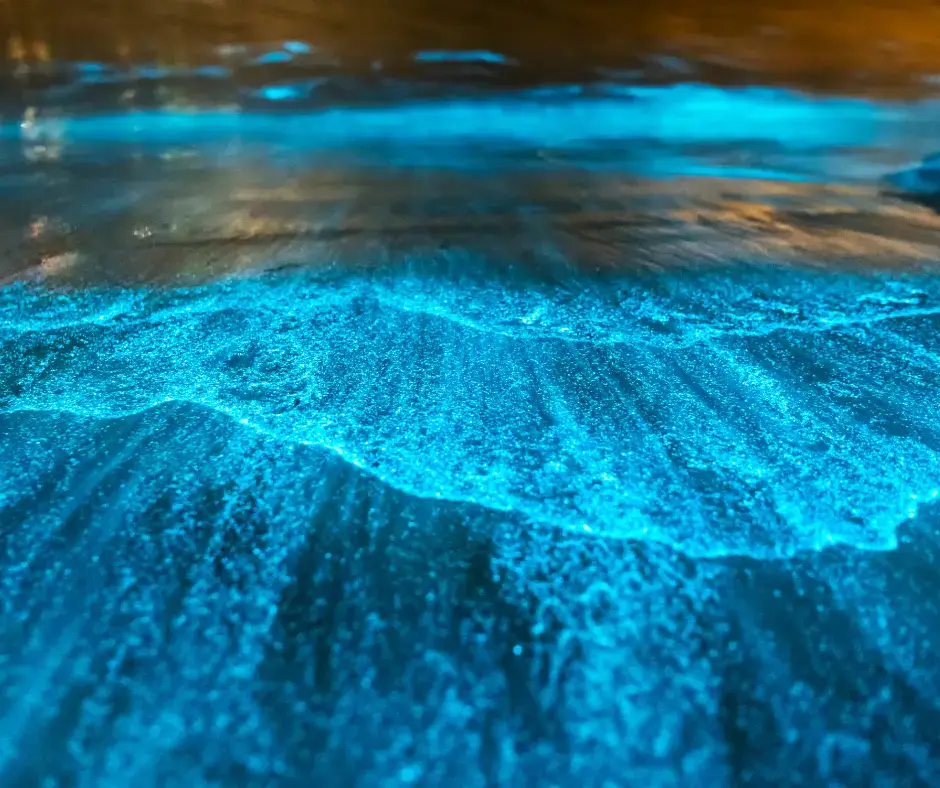
Bioluminescence: what is it?
Bioluminescence, the fascinating natural phenomenon of light produced by living organisms, can
be witnessed in various settings, from the ocean’s depths to the forest’s darkness.
Scientific explanation
Bioluminescence is the production and emission of light by a living organism. This process
occurs when a pigment, luciferin, is oxidized with the help of an enzyme called luciferase,
resulting in a glow. This chemical reaction can occur in various parts of the organism, including
specialized cells or organs known as photophores.
Bioluminescent organisms
A diverse range of organisms exhibits bioluminescence, such as some species of dinoflagellates
that spark oceanic algae blooms, bacteria that inhabit the skin of fish, fireflies flashing in the
night, and glowworms adorning cave ceilings. Each organism’s bioluminescent capabilities have
adapted to their unique environment and needs.
Bioluminescence vs. Fluorescence
Bioluminescence should not be confused with fluorescence, which is the absorption and re-
emission of light. While bioluminescence is a chemical reaction that produces light, fluorescence
occurs when organisms absorb light at one wavelength and emit it at another, which doesn’t
require a chemical reaction.
Environmental significance
Bioluminescence plays a pivotal role in the ecology and survival strategies of organisms. It’s
used to attract mates, ward off predators, or lure prey. In the vast, dark layers of the ocean, it acts
as a critical form of communication.
Threats and conservation
Human activities, such as pollution and habitat destruction, threaten bioluminescent species. The
conservation of these organisms and their habitats is essential, as it maintains the ecological
balance and preserve the beauty of natural light displays.
Record-setting bioluminescence
The Guinness Book of World Records has documented remarkable bioluminescent occurrences, such as the “milky seas” effect caused by expansive colonies of glowing bacteria. This natural spectacle has been observed so extensively that it is visible from space. Satellites equipped with sensitive imaging equipment have captured images of these glowing areas, providing a unique perspective on this rare and fascinating phenomenon. Despite its grand scale, the “milky seas” effect is still relatively rare, with only a few documented occurrences each year, mainly in the Indian Ocean and near Indonesia.
World’s top bioluminescent locations
The natural phenomenon of bioluminescence turns special locations worldwide into dazzling
displays of natural light. Here’s an in-depth look at these enchanting destinations, each offering
unique experiences beyond the glow.
Africa
Mission Rocks, South Africa
In the iSimangaliso Wetland Park, Mission Rocks occasionally displays bioluminescence, particularly in its rock pools. The park is a UNESCO World Heritage site known for its rich biodiversity, including coral reefs,
beaches, wetlands, and coastal forests. Visitors can enjoy snorkeling, safari drives, and bird watching. The nearby town of St. Lucia offers comfortable accommodations and a gateway to exploring this diverse region.
Watamu, Kenya
Though less known for bioluminescence, the beaches around Watamu can sometimes offer this rare spectacle. The area is more famously known for the Watamu Marine National Park, which boasts some of the best snorkeling and diving spots in East Africa, with its coral gardens and abundant marine life. And remember that on the Kenyan coast, you can find some of the most beautiful beaches in the world!
Nosy Be, Madagascar
The waters around Nosy Be have been known to exhibit bioluminescence. This island off the northwest coast of Madagascar is a tropical paradise with lush rainforests, pristine beaches, and rich wildlife. The Nosy Be Archipelago offers excellent opportunities for scuba diving, whale watching, and exploring remote islands. The Lokobe Reserve is a must-visit for those interested in seeing unique wildlife, including lemurs, chameleons, and endemic bird species.
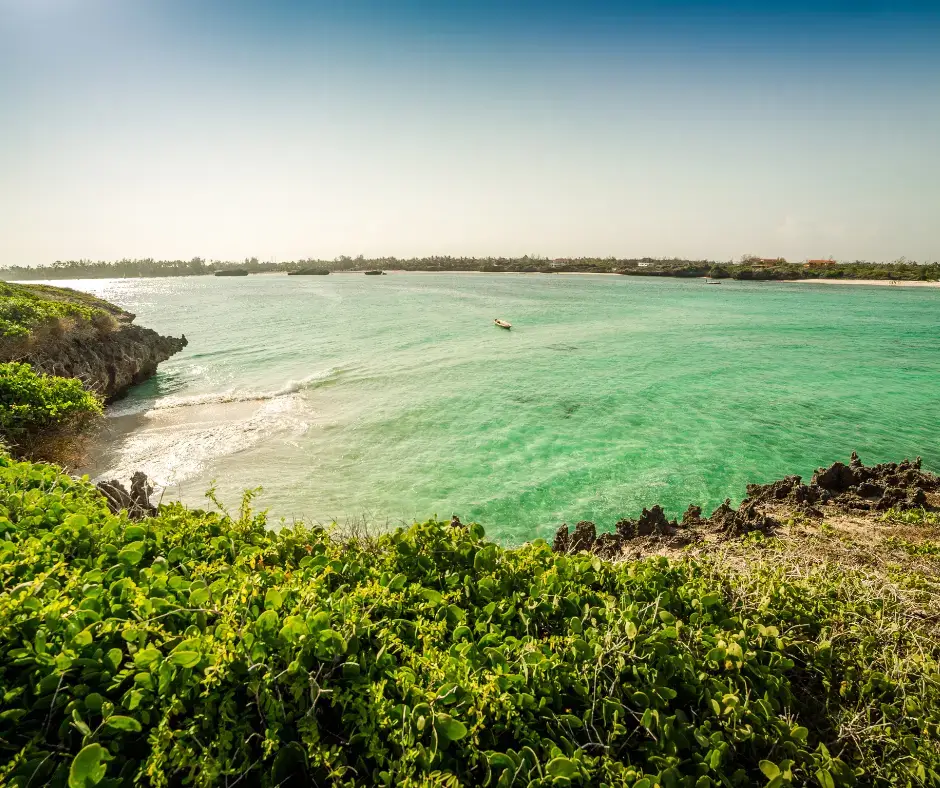
Asia
Toyama Bay, Japan
Famous for the firefly squid, Toyama Bay offers a unique bioluminescent
experience. The squids’ blue light creates an otherworldly spectacle in the waters. It is one of the
most incredible bioluminescent glowings you can experience worldwide.
Beyond its glowing shores, Toyama is known for its stunning mountain scenery, historic castles,
and excellent seafood. The Tateyama Kurobe Alpine Route, with its breathtaking views and
snow walls, is a must-visit.
Koh Rong, Cambodia
The shores of Koh Rong light up with sublime bioluminescence, visible when the water is disturbed. The warm waters of the Indian Ocean make the organisms glow very easily. This island paradise is not just about its glowing waters; it’s a haven of white sandy beaches, crystal-clear waters, and lush jungles. The laid-back atmosphere, beachfront bungalows, and vibrant nightlife make Koh Rong an ideal destination for relaxation and adventure.
Vaadhoo Island, Maldives
Vaadhoo Island is renowned for its stunning “Sea of Stars,” a natural phenomenon where the waters glow with bioluminescent phytoplankton, especially visible on moonless nights. This remarkable display, caused by dinoflagellates emitting light when agitated, creates an ethereal, star-like effect on the water’s surface, transforming the beach into a mesmerizing nightscape. While Vaadhoo is a small and less developed island compared to the rest of the Maldives, it offers visitors a unique and unforgettable experience, blending the allure of glowing seas with the tranquil beauty of Maldivian island life. The underwater life here is extraordinary, offering some of the world’s best snorkeling and diving experiences.

The Caribbean
Mosquito Bay, Vieques, Puerto Rico
This bay isn’t just known for its bioluminescence; it’s famed for being the brightest in the world. A nighttime excursion here—whether by kayak or boat—reveals waters that sparkle with an otherworldly light, thanks to the high concentration of dinoflagellates.
Beyond its glowing waters, Vieques captivates visitors with its serene beaches, fascinating
history, and the remnants of sugar cane plantations. The island’s biodiversity is showcased in its
wildlife refuge. At the same time, the Fortín Conde de Mirasol Museum offers a glimpse into the
island’s past. The presence of wild horses adds a touch of magic to the already enchanting
landscape.
Laguna Grande, Vieques, Puerto Rico
Aside from Mosquito Bay, Vieques is home to another bioluminescent wonder—Laguna Grande. A kayak trip through these glowing waters is like navigating a liquid starfield. If you loved the experience in Mosquito Bay and want to repeat it, Laguna Grande should be your choice.
Bioluminescent Bay, Grand Cayman
A kayaking tour in Grand Cayman’s Bioluminescent Bay is a must-do for nature enthusiasts. Being there at night unveils a surreal landscape of glowing waters. The island itself is a haven of luxury and natural beauty. The famous Seven Mile Beach offers pristine sands and crystal-clear waters, ideal for relaxation or water sports. The island’s coral reefs are a diver’s paradise. At the same time, the Queen Elizabeth II Botanic Park presents a serene escape amidst tropical flora and fauna.
Luminous Lagoon, Montego Bay, Jamaica
This lagoon, a short trip from Falmouth, offers an enchanting boat tour experience where the waters glow and sparkle under the night sky. But there’s more to Montego Bay than just its bioluminescence. It’s a city pulsating with life, known for its vibrant music scene, particularly reggae. Historical sites like the Rose Hall Great House glimpse Jamaica’s colonial past. The city’s beaches, like Doctor’s Cave Beach, are perfect
for those seeking sun, sand, and sea.

Central and South America
Manialtepec Lagoon, Oaxaca, Mexico
Near the surfing hub of Puerto Escondido, Manialtepec Lagoon offers a stunning bioluminescent display. The blue-green glow of the water is a sight to behold, especially during a night boat tour or kayak trip. Oaxaca is a cultural jewel known for its vibrant markets, rich indigenous heritage, and delicious cuisine. The area’s beaches are perfect for surfing, while the nearby Sierra Madre del Sur mountains offer hiking and birdwatching opportunities.
Belize
The waters of Belize, particularly around the new moon, are a playground for bioluminescent plankton. This natural light show is best enjoyed during a night snorkeling or diving trip. Belize is a notorious paradise for nature enthusiasts. The Belize Barrier Reef, a UNESCO World Heritage site, offers some of the world’s best snorkeling and diving experiences, with its vibrant coral reefs and rich marine life. The Great Blue Hole, a giant marine sinkhole, is a bucket-list destination for divers. On land, Belize’s lush rainforests, ancient Mayan ruins, and vibrant wildlife sanctuaries make it a destination that caters to adventurers and culture seekers alike.
Playa Bonita, Chile
The shores of Chile are not well known yet for their bioluminescence. However, there are a few places along the coast of Chile that are home to a glowing sea. While this “Pretty Beach” is worth a visit during the day, at night is when the magic happens. Playa Bonita is home to an incredible display of fluorescent glow – and you can even go night kayaking to see it in all of its glory.
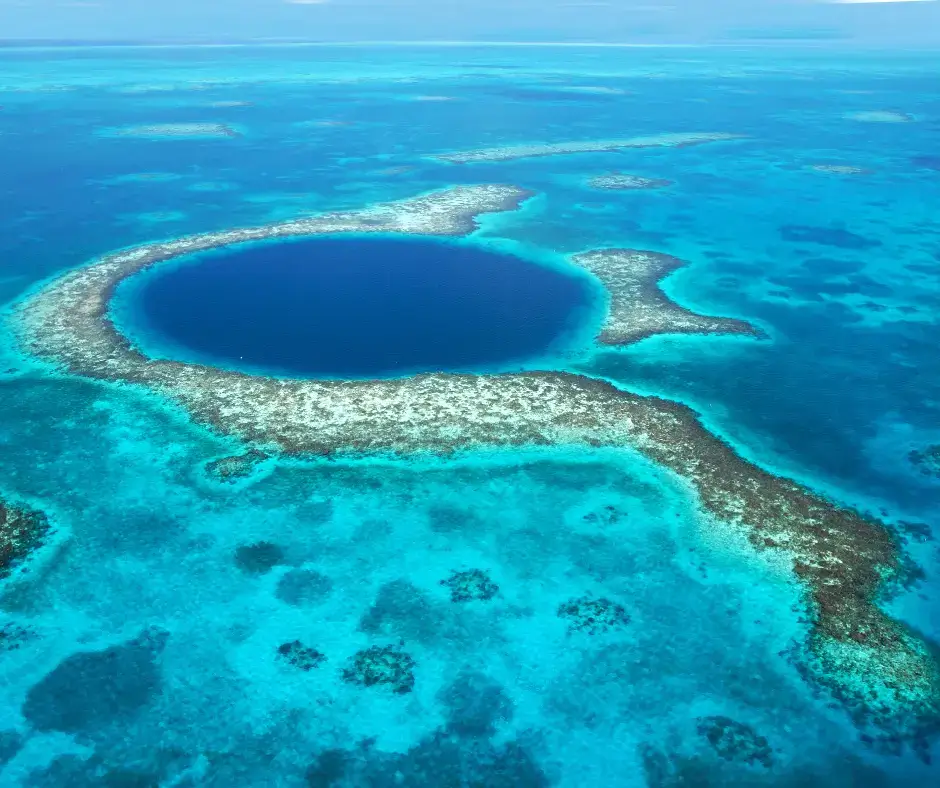
Europe
Zeebrugge, Belgium
The shores near Zeebrugge light up with bioluminescent algae during spring and early summer, creating a magical nighttime spectacle, a lovely exception in an area not famous for this phenomenon. Zeebrugge is a significant port town known for its fresh seafood, maritime history, and beautiful
beach resorts. Nearby Bruges’s medieval architecture, winding canals, and charming cobblestone
streets make for a perfect day trip.
North Devon Coast, UK
The elusive bioluminescent glow along the North Devon coast is a sight to behold under the right conditions. The phenomenon is due to the algae in the water that sometimes glow. With its rugged cliffs, sandy beaches, and rolling countryside, this area offers a quintessentially British seaside experience. The South West Coast Path provides stunning views and hiking opportunities. The region is also rich in history, with ancient castles and quaint fishing villages dotting the landscape.
Bay of Kotor, Montenegro
The bay, a winding landscape of crystal-clear waters and medieval towns, is one of Montenegro’s most picturesque areas. While less known for bioluminescence, the Bay of Kotor can occasionally display this natural wonder. Kotor is another UNESCO World Heritage site on this list. It is a beautifully preserved medieval
town with a rich history, stunning architecture, and a dynamic cultural scene. The bay area offers various activities, from exploring ancient fortresses to enjoying seaside cafes and local cuisine.
North America
San Juan Island, Washington State
As night falls on San Juan Island, particularly in the late summer, the shores come alive with a mesmerizing glow from bioluminescent algae. This natural spectacle is just one of the island’s many charms. Wildlife enthusiasts revel in the opportunity to see orcas in their natural habitat and bald eagles soaring overhead.
The island’s cultural heartbeat is in Friday Harbor, a picturesque town with art galleries, cozy cafes, and a rich maritime history. For those interested in viticulture, the island’s vineyards offer a delightful exploration of local wines.
Tomales Bay, California
Tucked away near San Francisco, Tomales Bay is a bioluminescent gem hidden in plain sight. On a warm night, kayaking through these waters reveals a spectacle of light beneath the surface. The bay’s surrounding area is a treasure trove for nature lovers. Point Reyes National Seashore provides breathtaking hiking trails and birdwatching opportunities. The bay is also famous for its oyster farming, offering fresh and delicious seafood. Tomales Bay is a perfect blend of natural beauty and culinary delight for those seeking a tranquil escape from
city life.

Oceania
Waitomo Caves, New Zealand
These caves are famous for their extraordinary display of bioluminescence, created by thousands of glowworms illuminating the ceilings with a starry blue light. This natural wonder is a unique ecosystem where the glowworms, Arachnocampa luminosa, use their luminescence to attract prey, creating a magical, otherworldly environment for visitors. Exploring these caves offers an unforgettable experience, where boat rides or guided walks reveal an underground world of ancient formations, echoing waterways, and a captivating
celestial-like glow.
Glowworm Tunnel, Australia
The Glowworm Tunnel, not too far from Sidney, offers a unique opportunity to see Australia’s bioluminescent organisms. The area around the tunnel is a haven for bushwalkers, with scenic trails and the chance to explore the remnants of a historic railway. The Blue Mountains, a short drive away, offer stunning natural scenery, Aboriginal cultural experiences, and charming mountain villages.
Tasman Peninsula, Tasmania
While not widely known for bioluminescence, the Tasman Peninsula occasionally showcases this phenomenon, especially on the Eastern Coast. The area is rich in natural beauty, with dramatic coastal cliffs, secluded bays, and diverse wildlife. The Tasman National Park offers excellent hiking trails, and the historic Port Arthur site
provides a fascinating insight into Australia’s colonial history. Adventure seekers can enjoy sea kayaking, where they might glimpse the elusive bioluminescence, especially on darker nights.
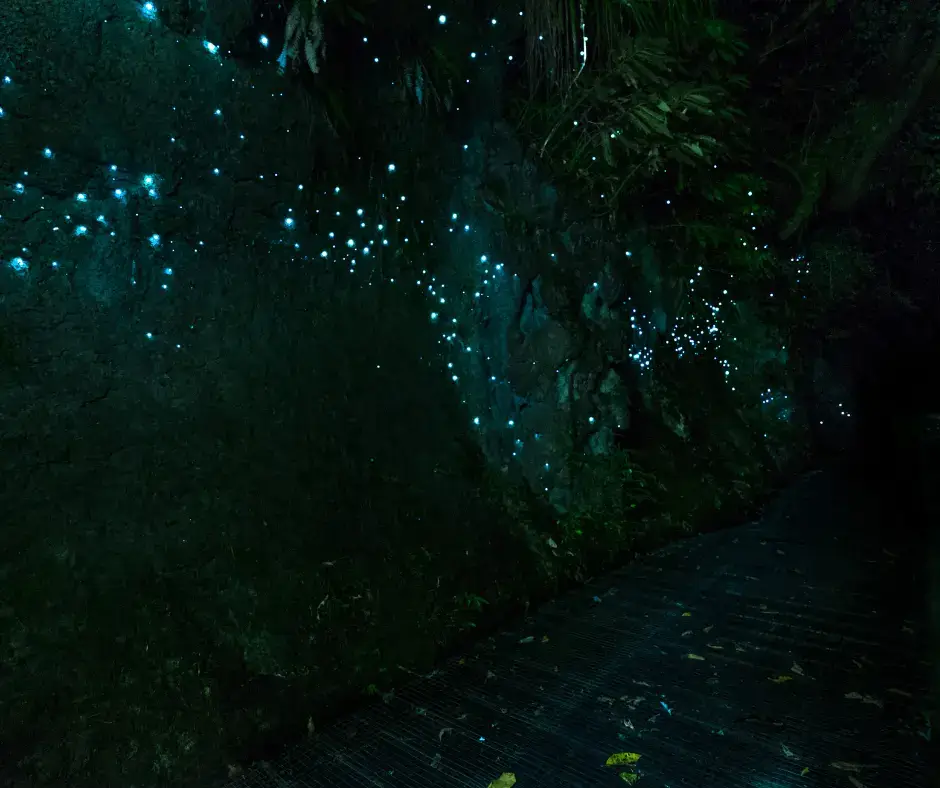
Best Times to Visit
The best time to observe bioluminescence depends on the location and the specific type of
bioluminescent organisms present. However, some general guidelines can help in planning the
optimal viewing experience:
● Time of Year: Bioluminescence is most visible in many locations during the warmer months, often from late spring to early fall. This is due to higher temperatures and ideal water conditions promoting bioluminescent plankton growth. For example, in places like Mosquito Bay in Puerto Rico or the Indian River Lagoon in Florida, summer months are often the best.
● Time of Night: Bioluminescence is usually most visible after sunset, in the darker hours of the night. A moonless night, or when the moon is in a waning phase, provides the darkest conditions, which can enhance the visibility of the bioluminescence. The absence of competing light sources (like city lights or moonlight) makes the natural light show more pronounced.
● Tidal Conditions: In some areas, tidal conditions can affect bioluminescence visibility. For instance, in some coastal regions, the movement of the tide can stir up bioluminescent organisms, making the phenomenon more noticeable. It’s important to note that bioluminescence can be unpredictable and varies from day to day due to environmental factors such as water temperature, movement, and the concentration of organisms. Therefore, it’s often recommended to check with local guides or tour operators who can provide the most current information about the best viewing times.
Save “Best Places to See Bioluminescence” for Later
About the Author


7 responses to “21 Best Places to see Bioluminescence”

I am sure that there are folks out there that will travel at great length to witness this increadible phenomenon. I am not just talking about the science community and conservationists but set of travelers who feel that there is more to visiting beautiful beaches around the globe #flyingbaguette

Wow! After reading this I immediately started thinking about where we could incorporate viewing bioluminescence into our travel plans. It really is a wonder of nature and something we would love to see. We knew about Toyama Bay but many of these locations were new to us and some were really surprising. I didn’t expect to be able to see bioluminescence in Devon, in our home country. Thank you for this post which is enlightening – both literally and figuratively!

The only place I’ve been lucky to see this was in Devon, UK – in my own country! We were rowing from our moored yacht we were on with friends, to the coastal village at night and the oars were disturbing the bioluminescence and creating whirlpools of swirling lights. It shocked me at first as I had never seen it. It was astounding and I thought I was in some kind of sci-fi movie!
The other thing from this post, is that I realised I was in a few of these places you mention and never knew that this phenomena was on my doorstep, so missed it all.
I have been blessed with many experiences with bioluminescence in the Gulf Islands of BC (San Juan Island in Washington State is part of this island chain) and it never fails to thrill me. It’s easy to spend hours just watching the glow shift as the waves roll in. I really appreciated the science you shared. My knowledge was pretty rudimentary. I have to admit, that I’ve wondered and then became so engrossed in watching, I never actually googled the answer!
I’ve made a note of some of these locations for my future travel list — the Maldives is especially intriguing with a very different pattern.

Bioluminescence is such an interesting phenomenon, although I kind of like the magic of it rather than thinking about what it actually is. I haven’t seen it myself but love that you’ve included some amazing places that you can not only see it but are great destinations on their own. I feel like a trip to South or Central America would have to be my first stop, mostly because it’s a region I also haven’t explored yet

Positively surprised to read there is a place very close by to my current location Brussels, but I’ll miss out on it as I won’t be around for the summer. Bummer! Have you had the chance to see this natural spectacle? The tunnel near Sydney sounds like the saves bet to encounter it, since it is not reliant on the tides.
Carolin | Solo Travel Story

The first time I saw the phenomenon in person was outside my house. Advantages for those who live on the beach. I confess that initially I had no idea what it was or how it happened, but after educating myself on the subject I became much more aware of the occurrence of this fabulous spectacle of nature.
Although it is not on the list, in Portugal the phenomenon is also quite common, especially (and like other places) in the summer season.






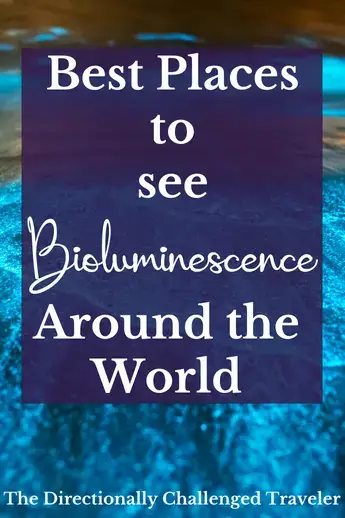





Leave a Reply